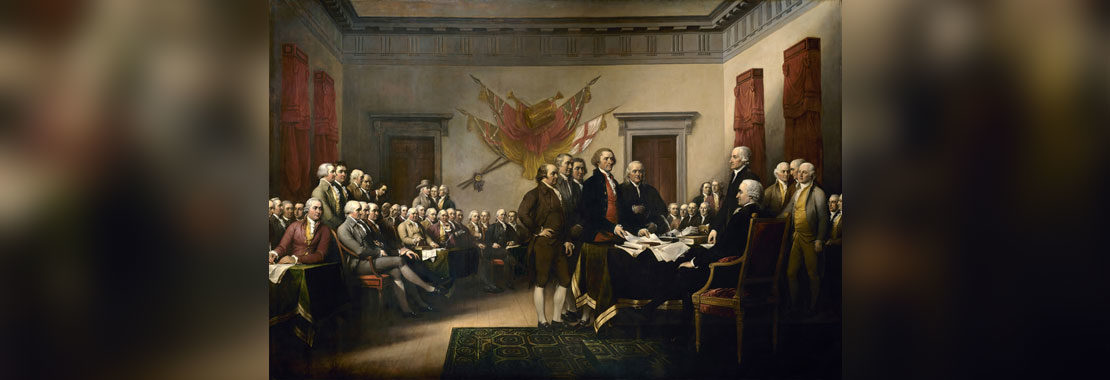Author: Emily Farris, Texas Christian University
On Twitter recently, I came across a viral tweet by documentary filmmaker Arlen Parsa, who edited John Trumbull’s painting, Declaration of Independence. Parsa placed red dots over the slaveholders present in Trumbull’s painting, which depicts the drafting committee presenting their work to the Second Continental Congress. Dots cover all but 13 of the 47 men in the painting.
Class Activity on the Declaration of Independence
The tweet reminded me of an exercise I do in my own Introduction to American politics class using a painting of the framers in Philadelphia (like many teaching ideas, I took this idea from someone else – probably from one of my mentors, Dr. Mirya Holman or Dr. Wendy Schiller, thank you!). I open my Constitution lectures by asking students to examine Howard Chandler Christy’s painting, Scene at the Signing of the Constitution of the United States. Usually students share that they see that the founders are all men, all white, and all look well off (the last one may require some prompting for students to examine their clothing – and side note: I also usually ask them to guess their ages, and most students guess closer to Ben Franklin’s age of 81 than the reality of the founders being fairly young, thanks to the grey wigs). I use these comments as a starting point to frame the discussion of the Constitution: the vast majority of the delegates in Philadelphia came from a privileged background – they had money and property. What were their interests in “preserving the nation?”
We then use the image in lecture to discuss the summer of 1787 in more detail. I mention the discrepancy of the curtains being raised and the aura of light surrounding Washington, despite the delegates choosing to keep the deliberations secret from the public. A lively debate among students usually follows over whether they should have kept the proceedings secret. The crumpled papers on the ground in front of the Connecticut delegation give students a visual to the Connecticut compromise. I ask students what objection the men from South Carolina might be raising with their arms, allowing our class entry into debates over slavery at the time of the founding.

